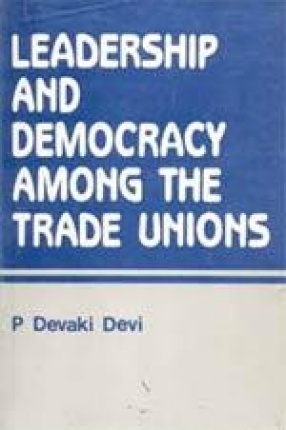Subtotal: $27.00
Leadership & Democracy Among The Trade Unions: A Comparative Study
In stock
Free & Quick Delivery Worldwide
Domestic government is considered possible in middle else societies. In the trade union context, democratic mechanisms are expected to operate only in unions whose members are well-educated, have economic as well as job security, and the status gap between the leaders and the member is not wide. In the modern form of democracy, some Western researchers find tht only the form of the union is democratic but in practice the Iron law of eligarchy is found operating. Marx, Engels, Bulcharin and Weber-view that certain obstacles arise in democratization of unions in the premiliary stages of unionism, but in their stages of unionism analysis they agree that unions operate democratically. In this regard, Lipset is of the opinion that the institutionalised’ two party system’ Supported by informed and interested rank and file lead to union democracy. In the midst of these postulates, the main Indices of union democracy formulated area a) Constitutional framework of the union democracy b) decision making, and c) participation of the leaders and the members. Methodologically, the problem is opprached from a structural-historical and interactional perspective based on ‘ ‘ex-post-facto’ model. The study indicates that democratic government is possible in trade unions, provided some conditions such as formal democratic quarantees and a history of democratic functioning are assured. It is also known that prevalence of democratic tendencies is influenced by a variety of factors such as outside leadership with political contacts, schooling and Income. Informal learning through work, union and political experience and leadership appears to increase leaders participation rate.
Bibliographic information
Title
Leadership & Democracy Among The Trade Unions: A Comparative Study
Author
Edition
1st ed.
Publisher
ISBN
8170992761
Length
xi+224p., Tables; Appendices; Bibliography; Index; 22cm.
Subjects

 Female Protagonists in Henry James's The Portrait of A Lady and The Bostonians
Female Protagonists in Henry James's The Portrait of A Lady and The Bostonians 


There are no reviews yet.